



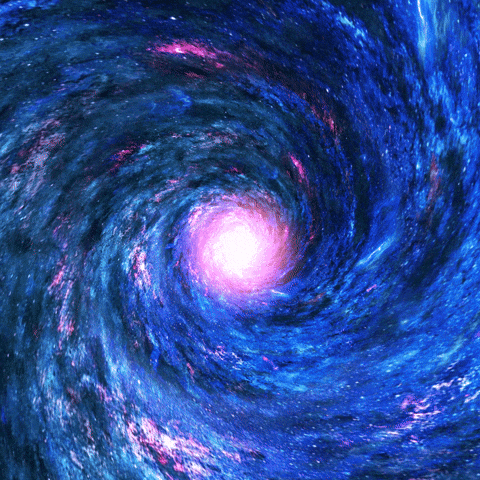
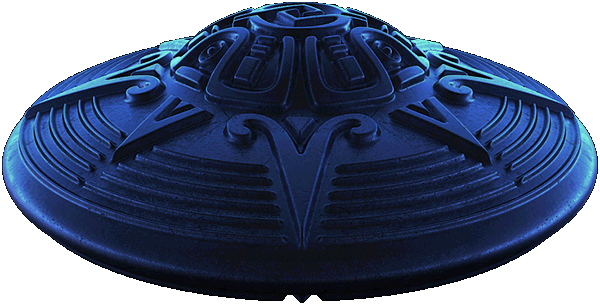

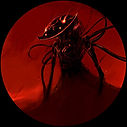
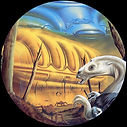

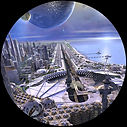

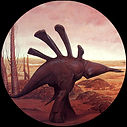



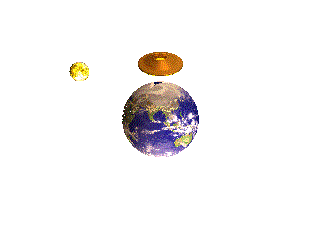


UFOS
The first well-known UFO sighting occurred in 1947, when businessman Kenneth Arnold claimed to see a group of nine high-speed objects near Mount Rainier in Washington while flying his small plane. Arnold estimated the speed of the crescent-shaped objects as several thousand miles per hour and said they moved “like saucers skipping on water.” In the newspaper report that followed, it was mistakenly stated that the objects were saucer-shaped, hence the term flying saucer.began an investigation of these reports called Project Sign. The initial opinion of those involved with the project was that the UFOs were most likely sophisticated Soviet aircraft, although some researchers suggested that they might be spacecraft from other worlds, the so-called extraterrestrial hypothesis (ETH). Within a year, Project Sign was succeeded by Project Grudge, which in 1952 was itself replaced by the longest-lived of the official inquiries into UFOs, Project Blue Book, headquartered at Wright-Patterson Air Force Base in Dayton, Ohio. From 1952 to 1969 Project Blue Book compiled reports of more than 12,000 sightings or events, each of which was ultimately classified as (1) “identified” with a known astronomical, atmospheric, or artificial (human-caused) phenomenon or (2) “unidentified.” The latter category, approximately 6 percent of the total, included cases for which there was insufficient information to make an identification with a known phenomenon.An American obsession with the UFO phenomenon was under way. In the hot summer of 1952 a provocative series of radar and visual sightings occurred near National Airport in Washington, D.C. Although these events were attributed to temperature inversions in the air over the city, not everyone was convinced by this explanation. Meanwhile, the number of UFO reports had climbed to a record high. This led the Central Intelligence Agency to prompt the U.S. government to establish an expert panel of scientists to investigate the phenomena. The panel was headed by H.P. Robertson, a physicist at the California Institute of Technology in Pasadena, California, and included other physicists, an astronomer, and a rocket engineer. The Robertson Panel met for three days in 1953 and interviewed military officers and the head of Project Blue Book. They also reviewed films and photographs of UFOs. Their conclusions were that (1) 90 percent of the sightings could be easily attributed to astronomical and meteorologic phenomena (e.g., bright planets and stars, meteors, auroras, ion clouds) or to such earthly objects as aircraft, balloons, birds, and searchlights, (2) there was no obvious security threat, and (3) there was no evidence to support the ETH. Parts of the panel’s report were kept classified until 1979, and this long period of secrecy helped fuel suspicions of a government cover-up.A second committee was set up in 1966 at the request of the Air Force to review the most interesting material gathered by Project Blue Book. Two years later this committee, which made a detailed study of 59 UFO sightings, released its results as Scientific Study of Unidentified Flying Objects—also known as the Condon Report, named for Edward U. Condon, the physicist who headed the investigation. The Condon Report was reviewed by a special committee of the National Academy of Sciences. A total of 37 scientists wrote chapters or parts of chapters for the report, which covered investigations of the 59 UFO sightings in detail. Like the Robertson Panel, the committee concluded that there was no evidence of anything other than commonplace phenomena in the reports and that UFOs did not warrant further investigation. This, together with a decline in sighting activity, led to the dismantling of Project Blue Book in 1969.

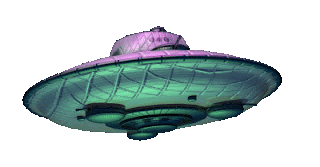


Other investigations of UFOs

Despite the failure of the ETH to make headway with the expert committees, a few scientists and engineers, most notably J. Allen Hynek, an astronomer at Northwestern University in Evanston, Illinois, who had been involved with projects Sign, Grudge, and Blue Book, concluded that a small fraction of the most-reliable UFO reports gave definite indications for the presence of extraterrestrial visitors. Hynek founded the Center for UFO Studies (CUFOS), which continues to investigate the phenomenon. Another major U.S. study of UFO sightings was the Advanced Aviation Threat Identification Program (AATIP), a secret project that ran from 2007 to 2012. When the existence of the AATIP was made public in December 2017, the most newsworthy aspect of it was a report that the U.S. government possessed alloys and compounds purportedly attained from UFOs that were of unidentifiable nature, but many scientists remained skeptical about this claim.
Aside from the American efforts, the only other official and fairly complete records of UFO sightings were kept in Canada, where they were transferred in 1968 from the Canadian Department of National Defense to the Canadian National Research Council. The Canadian records comprised about 750 sightings. Less-complete records have been maintained in the United Kingdom, Sweden, Denmark, Australia, and Greece. In the United States, CUFOS and the Mutual UFO Network in Bellvue, Colorado, continue to log sightings reported by the public.
In the Soviet Union, sightings of UFOs were often prompted by tests of secret military rockets. In order to obscure the true nature of the tests, the government sometimes encouraged the public’s belief that these rockets might be extraterrestrial craft but eventually decided that the descriptions themselves might give away too much information. UFO sightings in China have been similarly provoked by military activity that is unknown to the public.



Possible explanations for UFO sightings and alien abductions


UFO reports have varied widely in reliability, as judged by the number of witnesses, whether the witnesses were independent of each other, the observing conditions (e.g., fog, haze, type of illumination), and the direction of sighting. Typically, witnesses who take the trouble to report a sighting consider the object to be of extraterrestrial origin or possibly a military craft but certainly under intelligent control. This inference is usually based on what is perceived as formation flying by sets of objects, unnatural—often sudden—motions, the lack of sound, changes in brightness or colour, and strange shapes.
That the unaided eye plays tricks is well known. A bright light, such as the planet Venus, often appears to move. Astronomical objects can also be disconcerting to drivers, as they seem to “follow” the car. Visual impressions of distance and speed of UFOs are also highly unreliable because they are based on an assumed size and are often made against a blank sky with no background object (clouds, mountains, etc.) to set a maximum distance. Reflections from windows and eyeglasses produce superimposed views, and complex optical systems, such as camera lenses, can turn point sources of light into apparently saucer-shaped phenomena. Such optical illusions and the psychological desire to interpret images are known to account for many visual UFO reports, and at least some sightings are known to be hoaxes. Radar sightings, while in certain respects more reliable, fail to discriminate between artificial objects and meteor trails, ionized gas, rain, or thermal discontinuities in the atmosphere.“Contact events,” such as abductions, are often associated with UFOs because they are ascribed to extraterrestrial visitors. However, the credibility of the ETH as an explanation for abductions is disputed by most psychologists who have investigated this phenomenon. They suggest that a common experience known as “sleep paralysis” may be the culprit, as this causes sleepers to experience a temporary immobility and a belief that they are being watched.


extraterrestrial life
extraterrestrial life, life that may exist or may have existed in the universe outside of Earth. The search for extraterrestrial life encompasses many fundamental scientific questions. What are the basic requirements for life? Could life have arisen elsewhere in the solar system? Are there other planets like Earth? How likely is the evolution of intelligent life?
Universal criteria
No one knows which aspects of living systems are necessary, in the sense that living systems everywhere must have them, and which are contingent, in the sense that they are the result of evolutionary accidents such that elsewhere a different sequence of events might have led to different properties of life. In this respect the discovery of even a single example of extraterrestrial life, no matter how elementary in form or substance, would represent a fundamental revolution in science. Do a vast array of biological themes and counterpoints exist in the universe, or are there places with living fugues, compared with which Earth’s one tune is a bit thin and reedy? Or is Earth’s the only tune around?
Life on Earth, structurally based on carbon, hydrogen, nitrogen, and other elements, uses water as its interaction medium. Phosphorus, as phosphate bound to an organic residue, is required for energy storage and transport; sulfur is involved in the three-dimensional configuration of protein molecules; and other elements are present in smaller concentrations. Must these particular atoms be the atoms of life everywhere, or might there be a wide range of atomic possibilities in extraterrestrial organisms? What are the general physical constraints on extraterrestrial life?
In approaching these questions, several criteria can be used. The major atoms should tend to have a high cosmic abundance. Structural molecules of organisms at the temperature of the planet in question should not be so extremely stable that chemical reactions are impossible, but neither should they be extremely unstable, or else the organism would fall to pieces. A medium for molecular interaction must be present. Solids are inappropriate because of their inertness. The medium, most likely a liquid but possibly a very dense gas, must be stable in a number of respects. It should have a large temperature range (for a liquid, the temperature difference between freezing point and boiling point should be large). The liquid should be difficult to vaporize and to freeze; in general, it should be difficult to change its temperature. The interaction medium needs to be an excellent solvent. A fluid phase must be present on the planet in question, for material must cycle to the organism as food and away from the organism as waste.
The planet should therefore have an atmosphere and some liquid near the surface, although not necessarily a water ocean. If the intensity of ultraviolet light or charged particles from its sun is intense at the planetary surface, then some area, perhaps below the surface, should be shielded from this radiation (although some forms or intensity of radiation might permit useful chemical reactions to occur). Finally, it is imperative that conditions allow the existence of autotrophy (the ability of an organism to synthesize at least some of its own nutrients) or other means of net production of necessary compounds.
PhotosynthesisDiagram of photosynthesis showing how water, light, and carbon dioxide are absorbed by a plant to produce oxygen, sugars, and more carbon dioxide.
Thermodynamically, photosynthesis based on stellar radiation may be the optimal source of energy for extraterrestrial life. Photosynthetic organisms and the radiation they receive are not in thermodynamic equilibrium. On Earth, for example, a green plant may have a temperature of about 300 K (23 °C, or 73 °F); the Sun’s temperature is about 6,000 K. (K = kelvin. On the Kelvin temperature scale, in which 0 K [−273 °C, or −460 °F] is absolute zero, 273 K [0 °C, or 32 °F] is the freezing point of water, and 373 K [100 °C, or 212 °F] is the boiling point of water at one atmosphere pressure.) Photosynthetic processes are possible because energy is transported from a hotter object (the Sun) to a cooler object (Earth). Were the source of radiation at the same or at a colder temperature than the photosynthesizer, no photosynthetic activity would be possible. For this reason, the idea that a subterranean green plant will photosynthesize by use of thermal infrared radiation emitted by its surroundings is untenable. Equally unfeasible is the idea that a cold star, with a surface temperature similar to that of Earth, could sustain photosynthetic organisms.One can use these conditions to establish the limits for the chemical requirements of life. When atoms chemically combine, the energy necessary to separate them is called the bond energy, and the measure of this energy determines how tightly the two atoms are bound to each other. Bond energies generally vary from about 10 electron volts (eV) to about 0.03 eV. Covalent bonds, where electrons are shared between atoms, tend to be more energetic than hydrogen bonds, where a hydrogen atom is shared between atoms, and hydrogen bonds in turn are more energetic than van der Waals forces, which arise from the attraction of the electrons of one atom for the nucleus of another. Atoms, free or bound, move with an average kinetic energy corresponding to about 0.02 eV. The higher the temperature, the more atoms move with energy sufficient to break a given bond spontaneously.
Specific atoms have circumscribed functions in modern biology, but, aside from structure and the need for the liquid interaction medium, they may not be fundamental. The energy-rich phosphate bonds in adenosine triphosphate (ATP), about as energetic as the hydrogen bonds, are in fact of relatively low energy. Cells store large numbers of these bonds to drive a molecular degradation or synthesis. One expects the energy currency on high-temperature worlds to be much more energetic per bond and on low-temperature worlds to be much less energetic per bond.
In The Fitness of the Environment (1913), American biochemist Lawrence Joseph Henderson first stressed the advantages of carbon and water for life in terms of comparative chemistry. Henderson was struck by the fact that the very atoms needed are exactly those that are around. It remains a remarkable fact that the atoms most useful for life have very high cosmic abundances.



The search for extraterrestrial life

Astrobiology, a term coined for the study of all life anywhere in the universe (including Earth), has replaced exobiology, the study of extraterrestrial life exclusively and therefore criticizable as “a science that lacks a subject matter.” Unlike exobiology, astrobiology respects the scientific possibility that life beyond Earth may never be found. Indeed, no evidence for life beyond Earth has been adduced. However, the design of astrobiological experiments forces critical examination of the generality of assumptions derived from Earth life.
There is an entire spectrum of possibilities for life on another planet. A planet may be lifeless and lack any vestiges of organic matter or fossils. Alternatively, it may be lifeless but contain organic matter or fossils. There may be life having simple or quite complex biochemistry, physiology, and behaviour. Even intelligent life with a technical civilization may be found. Confirmation of any of these possibilities would be of great scientific importance.
The search for extraterrestrial life is most clearly grasped by imagining the reverse situation. For example, if humans were on Mars, examination of Earth for life with the full armory of contemporary scientific instrumentation and knowledge would be illuminating. Both remote and in situ testing might be attempted. In remote testing, light of any wavelength reflected from or emitted by the target planet can be examined. Remote-sensing methods seek thermodynamic disequilibrium, especially in the fluid phases (atmosphere and hydrosphere) of the planet. With in situ studies, samples of a planet must be acquired by instrumentation that lands there and performs experiments.
Chemical, mechanical, or spectral disequilibria may also be sought. Earth’s atmosphere contains large amounts of molecular oxygen and about 1.7–2 parts per million (106) of methane, but in thermodynamic equilibrium the abundance of methane should be less than one part in 1035. This huge discrepancy implies that some process continuously and rapidly generates methane on Earth such that methane increases to a very large steady-state abundance before it can be oxidized. Although the methane disequilibrium mechanism need not be biological (e.g., relatively stable aromatic hydrocarbons could have been produced nonbiologically early in Earth’s history, and slow degradation may then have led to a continuous loss of methane from the planetary subsurface), a biological explanation seems more likely. As seen from Mars, the methane discrepancy could be considered as a preliminary positive test for life on Earth. Indeed, the methane abundance on Earth is due to bacteria. Some methanogenic bacteria live in wetlands (hence the term marsh gas for methane), and others live in the intestinal tracts of cows and other ruminants. Similarly, the large amount of free oxygen gas might be considered a sign of life. The possibility that the photodissociation of water and the subsequent escape to space of hydrogen are the source of oxygen would need to be excluded. Also, spectroscopic detection of such relatively complex reduced organic molecules as terpenes (hydrocarbons given off by plants and found over forests) could be used as a test for life.By contrast, photographic observations of the daytime Earth from Mars would not necessarily detect life. Even at a resolution of 100 meters (330 feet)—that is, an ability to discriminate fine detail at high contrast only if its components are more than 100 meters apart—cities, canals, bridges, the Great Wall of China (long erroneously believed to be visible from the Moon), highways, and other large-scale accoutrements of Earth’s technical civilization would be extremely difficult to discern. As resolution progressively improves, it becomes increasingly easy to distinguish the regular geometric patterns of cultivated fields, highways, and airports. However, these are products of recent civilization; thus, only 100,000 years ago no clear sign of life would have been visible with remote-sensing techniques. Today lights of the largest cities are detectable from Mars, as are seasonal changes in the color of plants.
Scanning of the electromagnetic spectrum offers another technique for detecting life. Domestic television transmissions, the high-frequency end of the AM broadcast band, and radar defense networks make up some of the enormous amount of energy put out by Earth into space at certain radio frequencies. According to an estimate made by the Russian astrophysicist Iosif S. Shklovskii, if this radiation were to be interpreted as ordinary thermal emission, the implied temperature of Earth would be hundreds of millions of degrees. This radio “brightness temperature” of Earth would have steadily increased over the last several decades. The frequency and the time variation of these signals are not purely random noise.
In situ studies by vehicles that enter Earth’s atmosphere and land on the surface could detect life at many places on Earth. However, there are many other places where large organisms are infrequent such that life-detection attempts based solely on television searches for large animals would be inconclusive. Of course, if such an experiment were successful—for example, if the camera recorded a cavorting dolphin, a strolling camel, or a flying peacock—it would provide quite convincing evidence of life.
Although the open ocean, the Gobi Desert, and Antarctica are relatively devoid of large life-forms, they are—like other, less-barren ecosystems—replete with microorganisms. A television camera coupled to an optical or electron microscope might be an optimal life detector. The 17th-century Dutch microscopist Antonie van Leeuwenhoek had no difficulty in identifying as alive the little “animalcules” he found in a drop of water, even though nothing similar had been seen before in human history.
Metabolic and chemical criteria might be used for detecting life with in situ studies. The fixation of gas (such as carbon dioxide) when illuminated might be due to photosynthesis or chemosynthesis. Direct tests of soil or water for optical activity might be made. Organic molecules could certainly be sought with gas chromatography, mass spectrometry, or remote analytic chemistry. The detection of organic matter would then lead to experiments that would determine if it was biological in origin.
In general, many tests for life are intrinsically ambiguous. There remains the omnipresent problem of contamination. Any spacecraft might carry living organisms from the home planet and report them as detected on the target planet. Great care must be taken to ensure that the spacecraft is rigorously sterilized and travels without life from home.
Even the detection of significant quantities of extraterrestrial organic matter can be misleading. Carbonaceous chondrite meteorites fall on Earth from the asteroid belt. They contain up to 4 percent organic matter by mass. This matter has been ascertained to be of nonbiological origin. Microscopic inclusions also have been detected. The most abundant of these inclusions are mineralogical in origin. Highly structured inclusions, such as filaments or microspheres with central dots, are rare and sometimes the result of obvious contamination (one inclusion contained ragweed pollen). Claims of the extraction of viable microorganisms from the interiors of carbonaceous chondrites were not supported by subsequent evidence. These meteorites are porous and “breathe” air in and out during their entry into the atmosphere and during their storage prior to study. Significant opportunities exist for contamination after their arrival on Earth because of the ubiquity of microorganisms. Some bacteria extracted from a meteorite were facultative aerobes. As no planet in the solar system except Earth harbors significant quantities of oxygen gas, it is unlikely that the electron-transfer multienzyme pathways required for oxygen respiration evolved in the asteroid belt. Nevertheless, the large amounts of organic matter found in carbonaceous chondrites suggest that organic molecule production occurs with great efficiency in certain extraterrestrial locations. This production may serve as a natural precursor to life elsewhere.No single unambiguous “life detector” exists. Instruments of great generality that make few ambiguous assumptions about the nature of extraterrestrial life require luck (e.g., an animal or protist must walk or swim by during the operating lifetime of the camera) or the solution of difficult instrumental problems (e.g., the acquisition and preparation of samples for remote electron microscopic examination). Highly sensitive instruments, such as metabolism detectors, are directed at organisms presumably vastly more abundant than animals. These instruments critically depend on assumptions that are basically informed guesses (e.g., that extraterrestrial organisms eat sugars). Therefore, an array of both very general and very specific instruments is recommended to establish, or preclude, the existence of extraterrestrial life in the solar system.


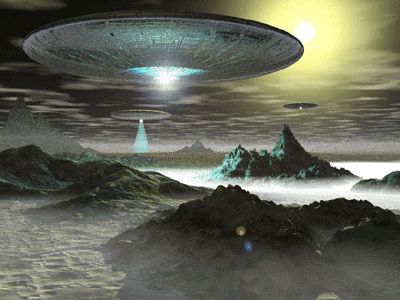
U.S. Police Officials Follow Flying
RAVENA, Ohio (AP) - "We were closer, closer than I ever want to be again," said a deputy sheriff who chased an unidentified flying object from Ohio into Pennsylvania.
Hundreds of persons in both states reported seeing the "brilliant and shiny" object early Sunday morning.
Police Chief Gerald Buchert of Mantua, about eight miles north of Ravena, said he took a picture of the object from his front yard but the air force told him not to release it.
Buchert said it looked like "two table saucers put together."
Dale Spaur, Portage County deputy sheriff, said he and his partner, W. L. Neff, "were close" to the object in separate cars and chased it 86 miles for 90 minutes, from near Ravena to Conway, Pa., near Pittsburgh.
Spaur said he clocked it at speeds up to 103 miles an hour. From the ground Spaur said it looked like the head of a flashlight, about 40 feet wide and 18 feet high.
Spaur said the lines of the object were distinct. "Somebody had control over it," he said. "It wasn't just floating around. It can manoeuvre."
The deputy said the chase slowed down near Rochester, Pa., when the cars "got tangled up in a mess of bridges . . . but when I came out from under the bridge it came down and waited for us, just as though it knew these two cars were following it."
"I know nobody's going to believe it, but it's true," he said.
Spaur said the only sound coming from the object was a steady, faint humming, like an electric transformer. Near Conway, Pa., Spaur said the object began hovering and "was going for altitude, straight up."
He said the object disappeared after he and others went to a police station to telephone air force officials.
The federal aviation agency's air traffic control centres at Oberlin and Pittsburgh said they spotted no unknown objects on their radar.

Just Another UFO Report, Says Falconbridge Official
The unidentified object observed in the sky over Mason Township Wednesday night is just one of many similar sightings, according to officials at Canadian Forces Base, Falconbridge.
"It was essentially the same as many of the other sightings reported," said Chief Warrant Officer H. W. Grant. "We don't bother much with them. We have orders to take the information and pass it on to the National Research Council in Ottawa."
He added that because of the automatic nature of the equipment at Falconbridge, it would be very unlikely that an operator would have noticed the object if it did appear on the screen.
TO COMPUTER
He said that all data from the Falconbridge station goes directly to North Bay and a computer which picks out any suspicious objects. "The scopes are only used to check the equipment," Grant said.
There was apparently a rash of sightings at one time in the past, and reported sightings have become a common thing for the men at the radar station. Grant said that it is unlikely that the computer had picked up anything suspicious, since it is programmed to pick up planes flying southwards. "It may have kicked out something about this because it didn't fit any programmed pattern," Grant said, but he noted that he had heard nothing about such an occurrence.
The sighting Wednesday night was made first by Mr. and Mrs. Lionel Chartrand, of Noelville, who saw the reflection of the object in the snow on their field.
Cons. D. G. White, of the OPP, went to the scene expecting a crank call, and instead observed the object through binoculars for three to four minutes as it slowly sank behind trees on the horizon.
He said that it was bell-shaped and was first orange, turning a silver grey and then, back to orange again.
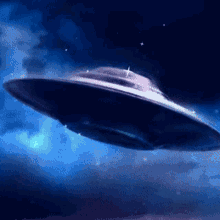
RCMP Saw Three UFOs over Rockies
TURNER VALLEY, Alta. (CP) - A blazing, white Unidentified Flying Object roaring like a jet aircraft, has been reported hovering near a farmhouse near Priddis, 10 miles west of Calgary, an RCMP officer says.
An officer of the RCMP Turner Valley detachment, said he went to the scene, Saturday, and saw three mysterious objects flit about above the Rocky Mountains.
The officer said in a statement, this week, that "the object is described as being 60 feet in diameter and 25 feet high, giving off a very white light as it hovered about 100 feet from the ground."
Constable Dave Grundy said the UFO was first reported at 2:30 a.m., Oct. 13, by a woman living on a farm near Priddis. The woman did not want her name released.
SEES OBJECTS
Constable Grundy said he went to the scene when the object was again reported last Saturday, at 2:50 a.m. - and this time, he saw it too.
"It was oblong with a crown and windows on the crown giving off a clear light. It was close enough, they (the woman and her children) could compare it in size to their house. Inside was a white, white light. It sounded like a jet engine without the whine. After about two minutes, it took off to the north, then west, very fast, they said."
The constable said that by the time he arrived, the object had flown off to the west, watched by the woman and her children through a telescope. Looking through the telescope, the officer said he saw "three objects jumping around all over the place, in the west, above the Rockies."
"They appeared to be diamond-shaped," the constable said. "That was quite an experience...I saw what I saw."
